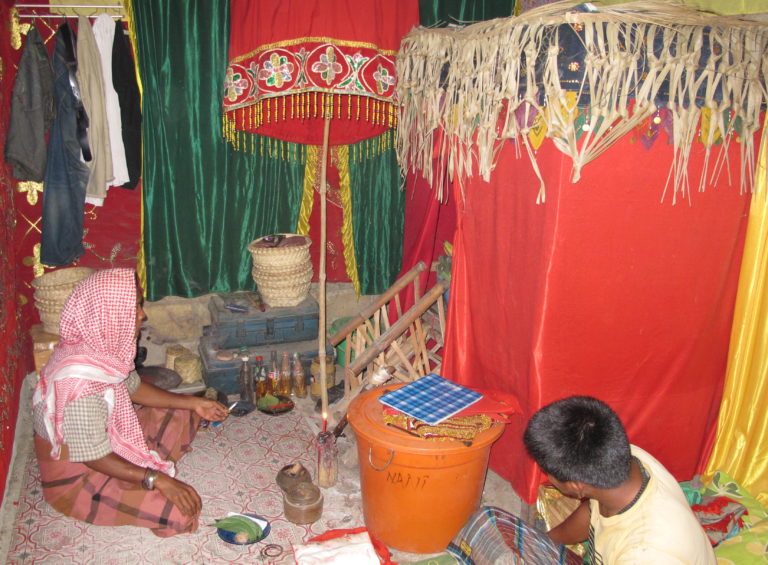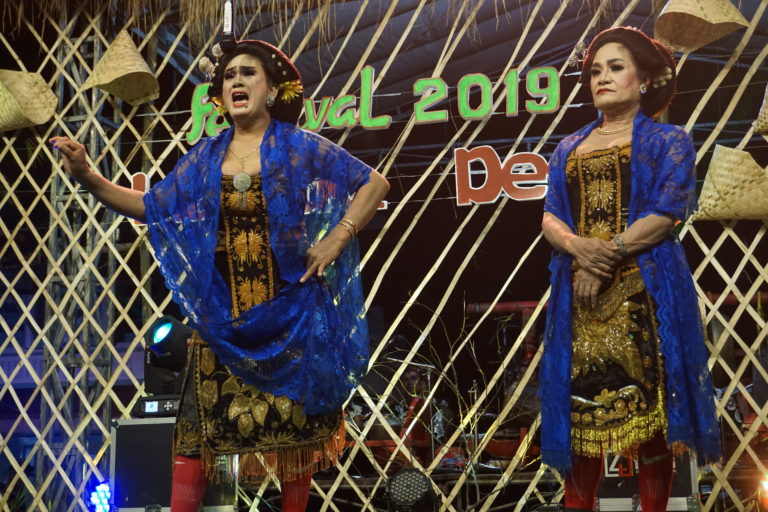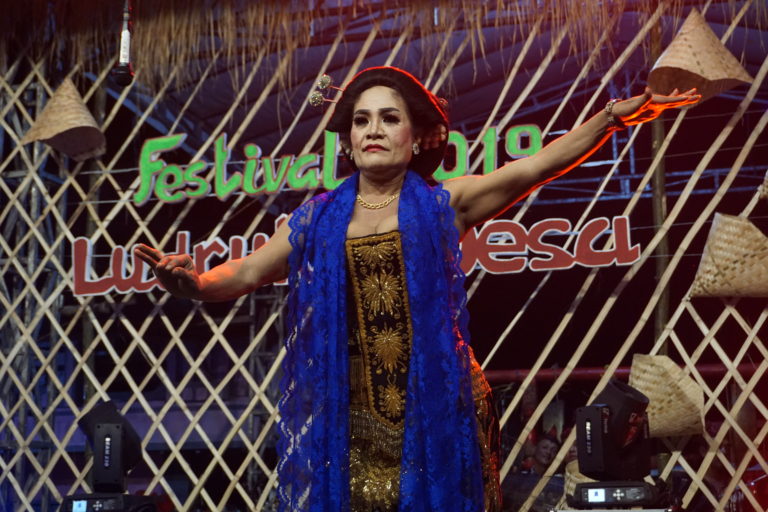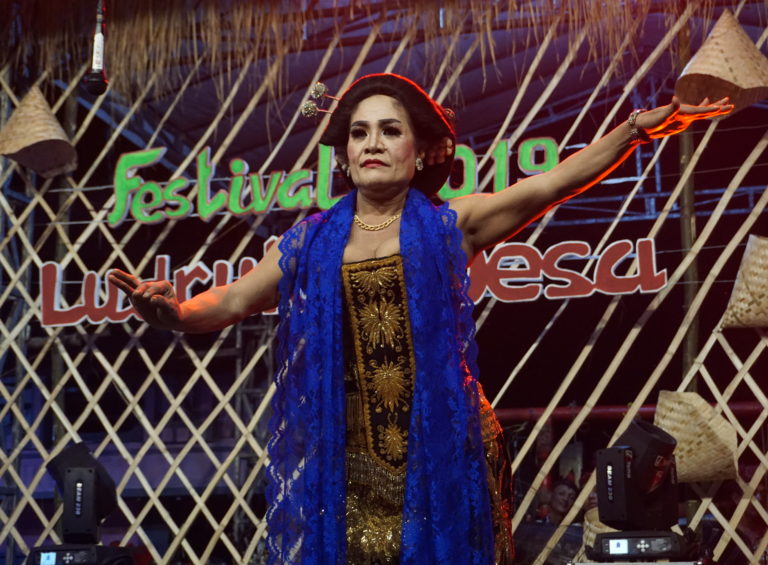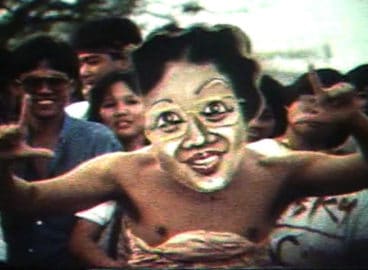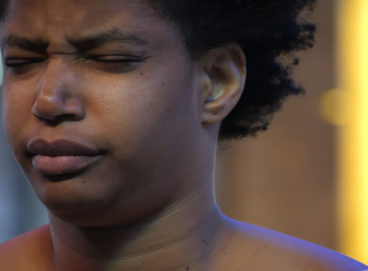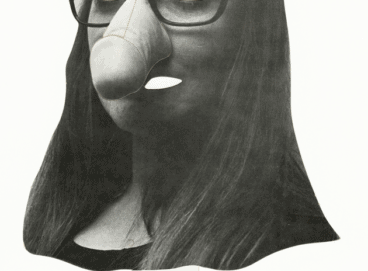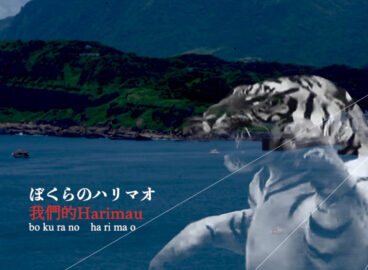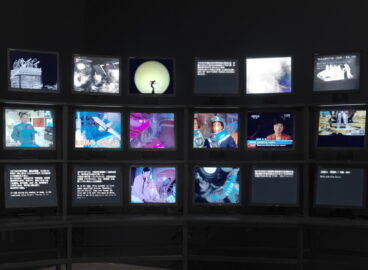Artist and community organizer Tamarra reflects on the personal experiences, emotional complexities, socio-political events, and pilgrimages to non-binary communities across Indonesia that motivated Tamarra’s name change.1Tamarra’s pronouns are Tamarra. This text is translated from Bahasa Indonesia by Ferdiansyah Thajib, and is the first in an editorial series initiated by the C-MAP Asia Fellow.
Hello, My Name Is Tamarra is my first performance art project of 2021. It was commissioned for a festival organized by the ASEAN SOGI (Sexual Orientation and Gender Identity) Caucus, a network of queer and gender activists from Southeast Asia. Hello, My Name Is Tamarra was performed on February 20, 2021 (https://youtu.be/RjGDWCYhR4E), in front of the Serangan Umum 1 Maret 1949 (General Offensive of March 1, 1949) monument in Yogyakarta. This monument was built to commemorate the military offensive conducted in 1949 against the Dutch troops occupying Yogyakarta. The attack was carried out by the Indonesian National Army under the leadership of Lieutenant Colonel Suharto to assert Indonesia’s sovereignty during a time when the Dutch colonial government refused to officially recognize the Republic of Indonesia.
During my thirty-minute performance, I stood in front of the monument and repeated the phrase “Hello, my name is Tamarra” in English as an affirmative declaration of my gender identity, which has for a long time been uniformized by the Abrahamic religions that were spread through colonialism and subsequently enforced by the state. I performed in a safari costume featuring brightly colored stripes and hearts. I designed this costume as a form of compassionate defence: to symbolize the diversity enshrined in the Indonesian national motto “Bhinneka Tunggal Ika” (Unity in Diversity).
I chose this particular monument as a background for my declaration because it alludes to my desire to stand against the continued silencing of people who are othered or excluded from citizens’ basic rights to protection. This is in spite of the fact that in 2006 Yogyakarta hosted the signing of the Yogyakarta Principles—a document listing international human rights laws and their application in relation to sexual orientation and gender identity.
Beyond issues surrounding identity politics or even my own self-identification, this performance affirms my rights as an individual to the freedom to make my own life choices—whether they are personal or related to complex bureaucratic and legal situations in Indonesia. For instance, in a small institution like my own family unit, although it has been far from easy, I think I have been quite successful in affirming my gender expression. Apart from the fact that I can now afford to buy my own clothing, my mother is no longer buying or sewing me clothes that she considers appropriate for someone who was assigned male at birth and grew up in a Muslim family. I also legally changed my name from my birth name, given to me by my late father, to Tamarra (a common name for womxn in Indonesia and my chosen name since I was eighteen years old). Of course, the relative ease of this negotiation only came about after many long and difficult conversations with my family.
This name-changing process sparked my curiosity about the system of naming. Since when have names been gendered? How is the gendering of names in English different from in Bahasa Indonesia? Is the Indonesian naming system related to colonialism? I have no idea! What’s clear is that I chose the name Tamarra with full awareness of the consequences that I will gladly accept throughout my life.
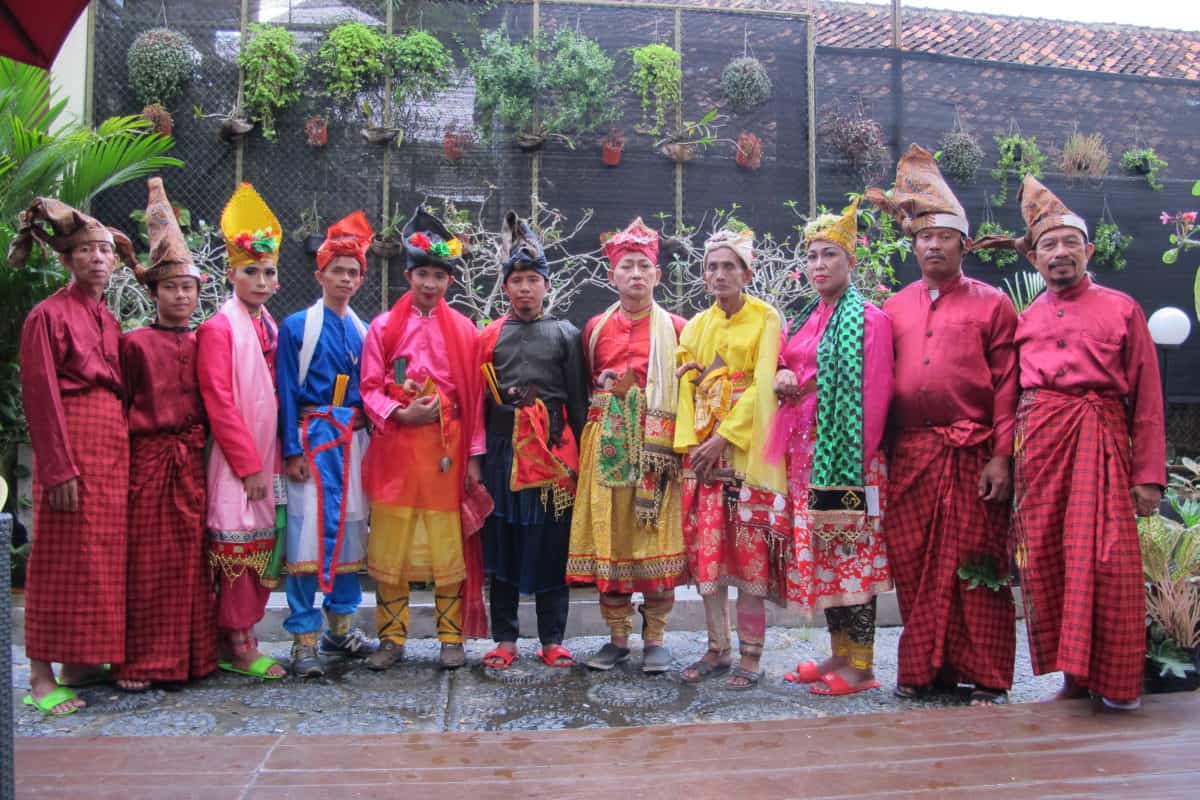
My name change, as well as my subsequent artworks, were influenced by my pilgrimages to the ancestral sites of non-binary communities in various regions of Indonesia, and by a personal desire to decolonize gender in Indonesia. Through my journey, I wanted to learn more about the past and present survival strategies of non-binary people in Indonesia. In 2016, I embarked on my first pilgrimage to visit the bissu in South Sulawesi. In this Indonesian province, the ethnic Buginese social structure acknowledges five genders: oreane (cisgender male), makkunrai (cisgender female), calabai (assigned male at birth with feminine expression), calalai (assigned female at birth with masculine expression), and bissu. While they are recognized as persons of non-binary gender within this culture, most bissu were identified as calabai before being inducted as bissu. In fourteenth-century South Sulawesi, when the Tolotang religion or belief system was embraced, the bissu played important roles as spiritual leaders. Apart from acting as mediators between the king and the gods in the sky and sea, the bissu were also in charge of leading religious rituals and guarding the Bola Arajang, a house in which all traditional sacred heirlooms are kept.
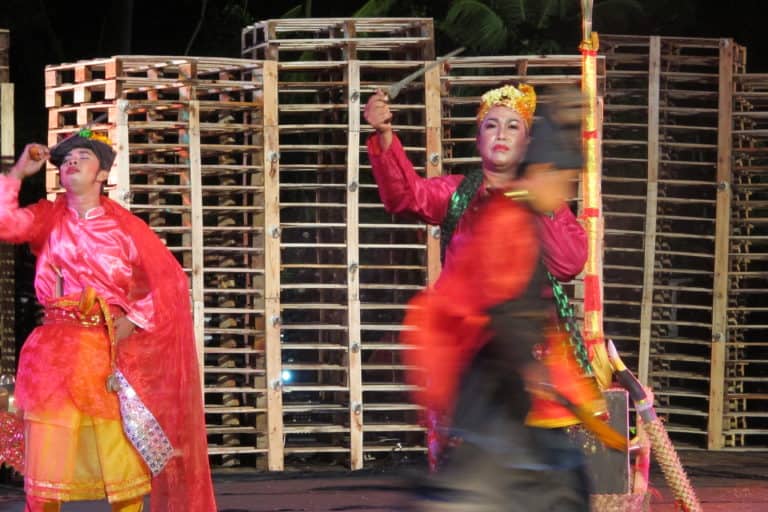
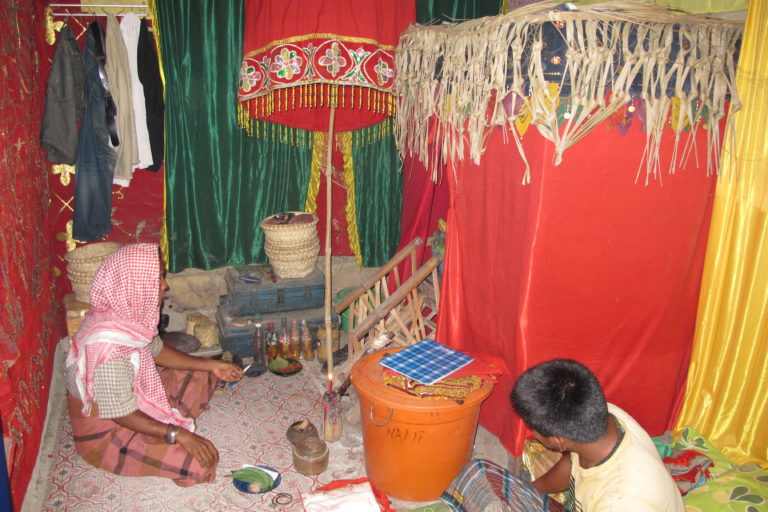
In late 2019, I continued my pilgrimage, traveling to Jombang and Mojokerto, East Java, to see ludruk performance troupes. Ludruk is a traditional and itinerant performing art form that originated in Jombang in about 1810. Troupes moved from one village to another, and usually stayed only for a month or two in any one location. Traditionally featuring male actors in women’s clothing and makeup, ludruk was originally associated with comic folk entertainment in rural areas and performed in crowded places like the market. Apart from the regular actors and other performers, such as gamelan musicians and dancers, traditional ludruk is also marked by the role of the tandak, a waria or trans woman actor who specializes in playing female characters.
Since the beginning of the twentieth century, ludruk has been performed in open-air spaces on the outskirts of urban centers instead of in bustling village settings. This relocation has not, however, deterred audience enthusiasm for the art form. Over time, the function of ludruk has also changed to become a medium of critique of colonial rule. Later on, in the 1960s, ludruk performers were persecuted for being too critical of the regime in power and were branded as supporters of the Indonesian Communist Party. They were then arrested and “re-educated” to serve as mouthpieces for government propaganda.
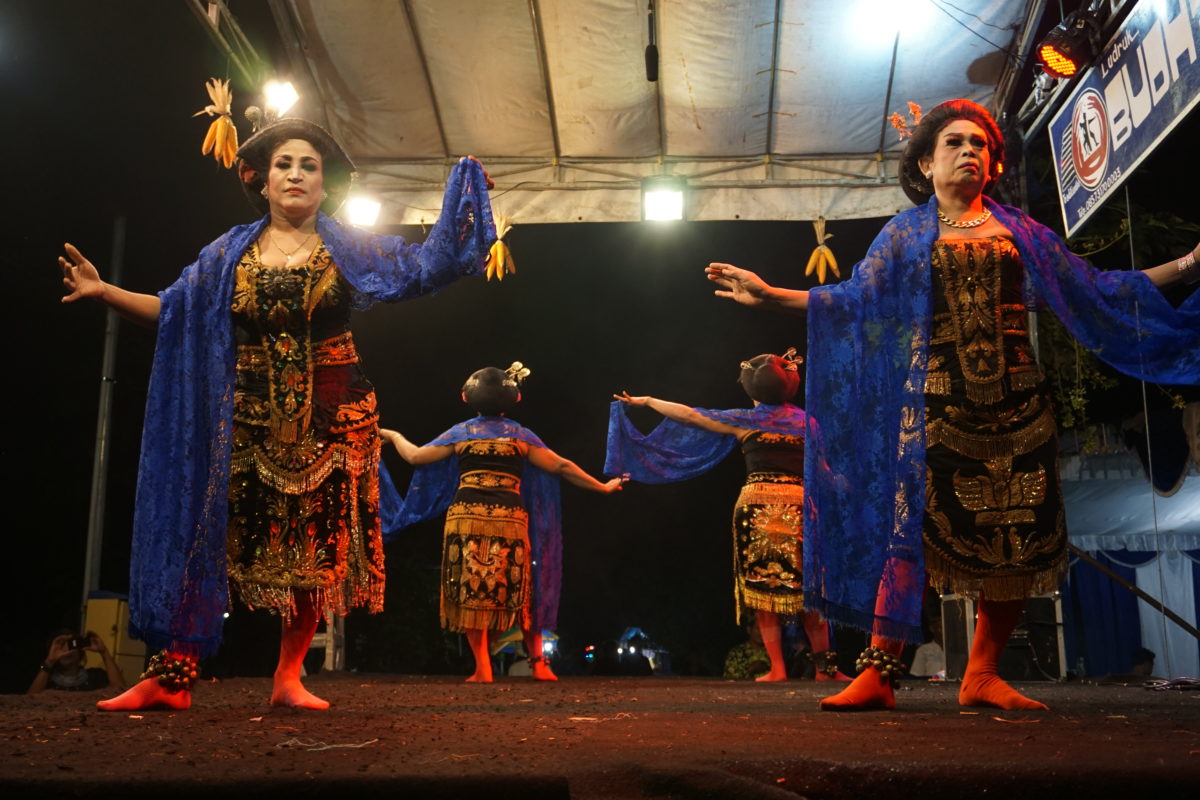
During my pilgrimages to South Sulawesi and East Java to visit non-binary folks, I used “Tamarra” only as a stage name, as I had not yet officially registered my name change. I remember how people I met back then often asked me whether it was my real name. It made me think about how, even within these vulnerable communities, the authenticity of one’s identity is still questioned. I used to imagine the day when I could proudly show my ID card with the name “Tamarra” printed on it whenever someone asked that question. I therefore think of my name change as a way to show how I have fought for the “small” things that have felt right for me.
I also changed my name in a personal effort to separate myself from the “system”—whether it be at an intimate (my family) or broad (the state) scale. I no longer wish to be positioned against the forces of religion or law that, in this country, have been prompting the oppression of non-binary communities like the bissu. From about 1950 to 1965, the government confiscated the bissu’s customary lands, which they had cultivated agriculturally for hundreds of years as a source of livelihood, to build public service buildings in the name of pembangunan, a governmental policy of development.2Developmentalism was Suharto’s main strategy of ruling. This so-called development was founded on the blood and bones of its own citizens, and destroyed the cultures of those considered ancient, backward, and contradictory to the teachings of Abrahamic religions.
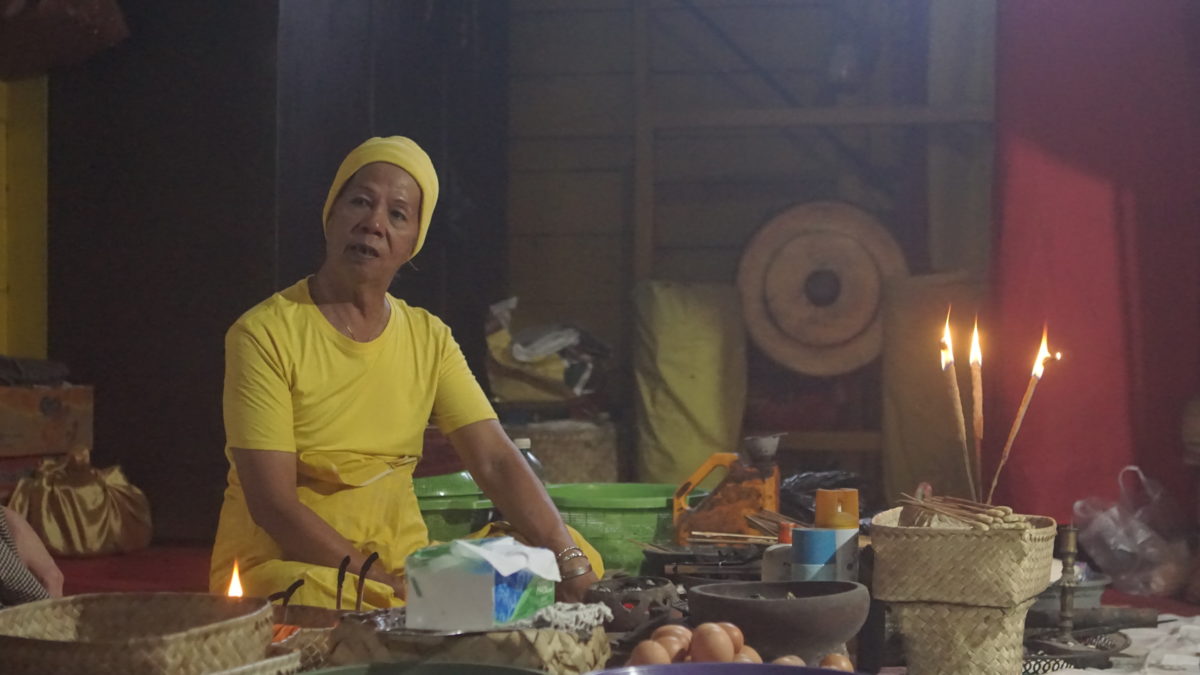
Even today, the government seems to have become an extension of colonial agencies, plundering and discriminating against those it deems incompatible and oppositional, and burying their knowledges and historical traces. It is no wonder that many non-binary folks have fled their hometowns to cities that they consider safer for survival without even carrying their KTP (identity card). But what will life be if it continues to be mere survival? Isn’t every single one of us born to live life to the fullest?
Like other non-binary folks, in 2008, at the age of eighteen, I moved to Yogyakarta from Tasikmalaya, a city known as the “City of Santri” (students of Islam) or “the City with a Thousand Mosques,” where I was born and spent my childhood. Luckily, I have been legally registered as a citizen of Yogyakarta since March 29, 2018. I achieved this status after rejection and expulsion by certain residents in Yogyakarta who saw me as the antithesis of their religious teachings and even viewed me as the cause of natural disasters in various parts of Indonesia. I can still compromise when expressing my gender. I also have the ability to dispel these discriminatory or repressive actions from members of society and the government through my performances. I guess these are the perks of being known as a performance artist. However, beyond the affordances that this professional life has offered me, I do hope that there will come a time when my personal notion of “performing” as a means of survival and gaining social acceptance can come to an end. Such a notion will not be needed anymore when people value differences and are able to coexist in diversity.
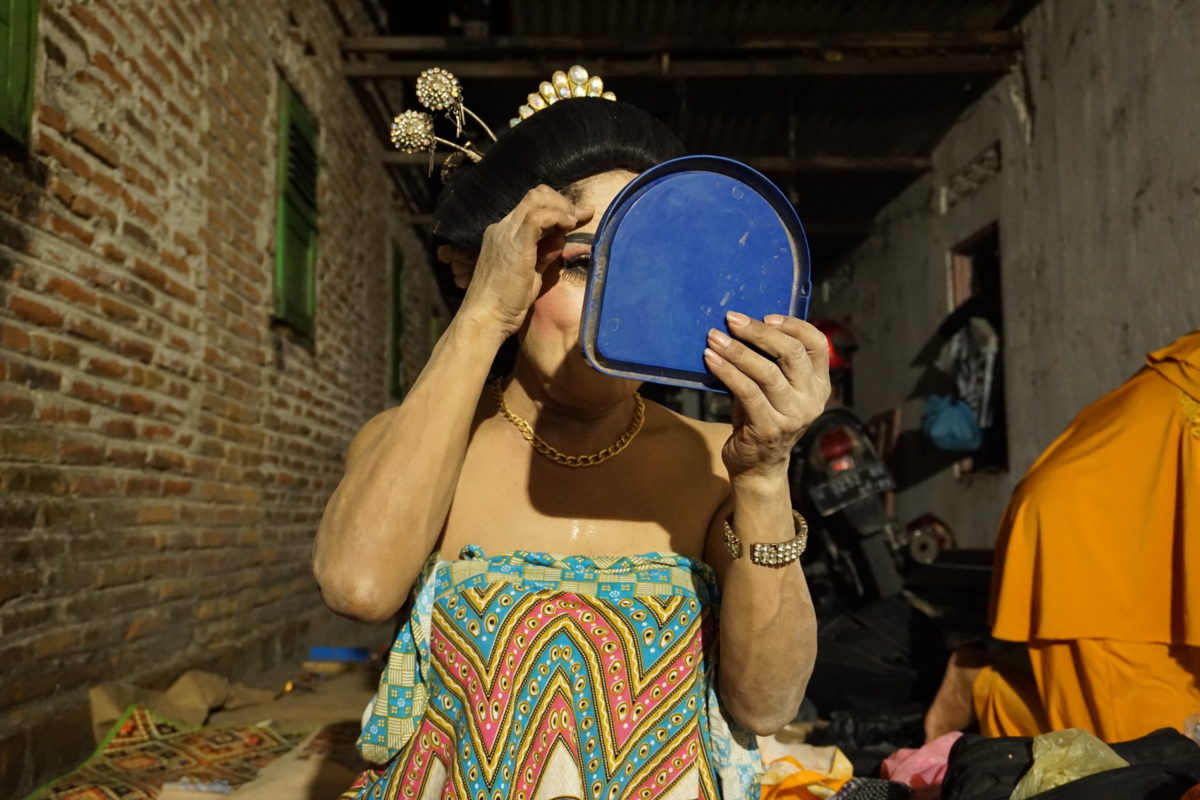
I use art as a medium to speak out, enjoy life, and create platforms for others. For example, in an upcoming project titled Rumah tumpang sari (literally, “Polyculture House”), which I co-initiated with my friend Ferdiansyah Thajib from KUNCI Study Forum & Collective, we plan to build a housing facility for five non-binary Indonesians who will participate in a twelve-month artistic residency. The program will include practical activities, such as learning to cultivate land and water for agricultural purposes, alongside consultations with psychologists and spiritualists whose aim will be to heal those residents who have experienced trauma at the hands of their families, communities, and systems of governance. At the end of this process, the five residents will create individual and/or collaborative artworks that reflect their journey during the residency. We conceived this project as a way to reclaim our homeland and synergize with nature as means for survival. Hopefully, this effort will help foster the residents’ sense of belonging in their communities, and be an exemplar for a government that continues to turn a blind eye to our history. We initiated this project with the hope that the ongoing cycle of injustice can be broken for the sake of our future generations.
- 1Tamarra’s pronouns are Tamarra.
- 2Developmentalism was Suharto’s main strategy of ruling.
